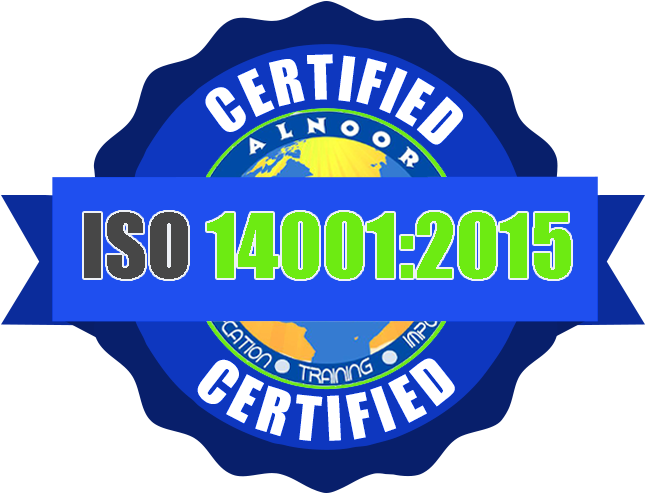
THE NEW ISO 14001 STRUCTURE The new standard is published in the month of September, 2015. ISO 14001:2015 is based on the new High Level Structure (HLS) that brings a common framework to all management system standards. This helps to keep consistency, alignment different management system standards, offer matching sub-clauses against the top-level structure and apply common language across all standards. The key changes in the proposed standard are: The emphasis on leadership The focus on risk management Emphasis on objectives measurement and change Communication and awareness Fewer prescriptive requirements With the new standard in place, organizations will find it easier to incorporate their environmental management system into the core business processes and gain greater business benefits. Who should use the ISO 14001:2015 revision? ISO 14001:2015 should be used by any organization that wishes to set up, improve, or maintain an environmental management system to conform with its established environmental policy and requirements. The requirements of the standard can be incorporated into any environmental management system, the extent to which is determined by several factors including the organization’s industry, environmental policy, products and service offerings, and location. ISO 14001:2015 is relevant to all organizations, regardless of size, location, sector, or industry. What topics does ISO 14001:2015 cover? At the highest level, ISO 14001:2015 covers the following topics with regard to environmental management systems: Context of the organization Leadership Planning Support Operation Performance evaluation Improvement ISO 14001:2015 Revisions – 14001:2004 vs. 14001:2015 The 2015 revision of ISO 14001 introduces a number of changes from previous versions. As part of the effort to structure all ISO standards in the same way, the revisions introduced in the 2015 version of ISO 14001 include incorporating a required high-level structure, using mandatory definitions, and incorporating common standards requirements and clauses. Identified 10 major areas of impact of the 2015 revision: Expansion in EMS coverage and scope Required interactions with external parties New requirements for leadership engagement Expanded legal compliance requirements Need for risk-based planning and controls New documentation requirements Expanded operational control requirements Changes in competence and awareness requirements Impacts on the internal audit program Increased certification costs Why is ISO 14001 being revised? All ISO standards are reviewed every five years to determine if a revision is necessary to keep it current and relevant for the marketplace. ISO 14001:2015 will respond to latest trends and ensure it is compatible with other management system standards, such as ISO 9001.
THE NEW ISO 14001 STRUCTURE
The new standard is published in the month of September, 2015. ISO 14001:2015 is based on the new High Level Structure (HLS) that brings a common framework to all management system standards. This helps to keep consistency, alignment different management
In the case of complaints please send Us
See More Certificates Our Company
AL-NOOR GROUP Certification is always a perfect choice because we always strive to understand your demands and work hard to achieve them , we also feel our commitment towards our customers and that we are responsible to do our work with most acceptable quality and in good time and distinguished cost .
Yes, it can. This usually happens when an organisation becomes dissatisfied with the service provided by a certification or the fee it charges. Perhaps the quality of the audits or auditors is not as would be expected, additional ‘extra’ fees are being added to invoices, or the certificate does not display a valid accreditation mark? For companies wishing to enter international markets or win an important client, an accreditation mark, such as EGAC, can play a crucial role.
The world’s Accreditation Bodies are those bodies who are offiailly formulated by thier govornments , together they created an international forum in Australia with the name if International accreditation forum IAF , they signed together an agreement to allow each other to work internarionally with no obsticles , this agreement calles the multilateral agreement .
that mean any accrediation body who is member in IAF can issue ISO certificates in any country who is member in the MLA in IAF with no any kind of problems .
AL-NOOR GROUP Certification is Accredited by EGAC in Egypt , EGAC full member in IAF and signed the MLA at IAF .
It gives value and credence to the certification. An accredited certificate is usually the only type accepted in tenders for new business.
Accreditation is the approved recognition of a certification body to perform certifications against different standards. Every country has its own regulated accreditation body. These bodies issue accreditations to certification bodies such as AL-NOOR GROUP Certification. Accreditation is achieved by demonstrating prescribed controls and systems are in place. These requirements are also defined by international standards (for systems certification this is ISO 17021).
ISO is an abbreviation for the International Organization for Standardization based in Geneva. This organisation issues international standards called ISO.
Certificates for a limited time period, usually for three years, are issued by an accredited certification body. In order to keep the certificate valid, a periodic audit is performed, typically once a year. If fundamental deviations from the standard requirements are discovered, the extreme measure of the certificate withdrawal can be applied. This is a very rare, exceptional and unpleasant situation. Therefore, when a company decides to implement and follow an ISO standard, it is a voluntary commitment to continuous improvement and development, which is worth the company’s effort.
Copyright © 2023 AL-NOOR GROUP, All rights reserved.